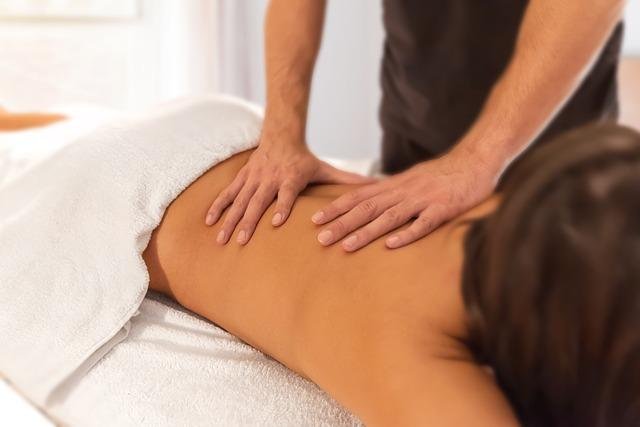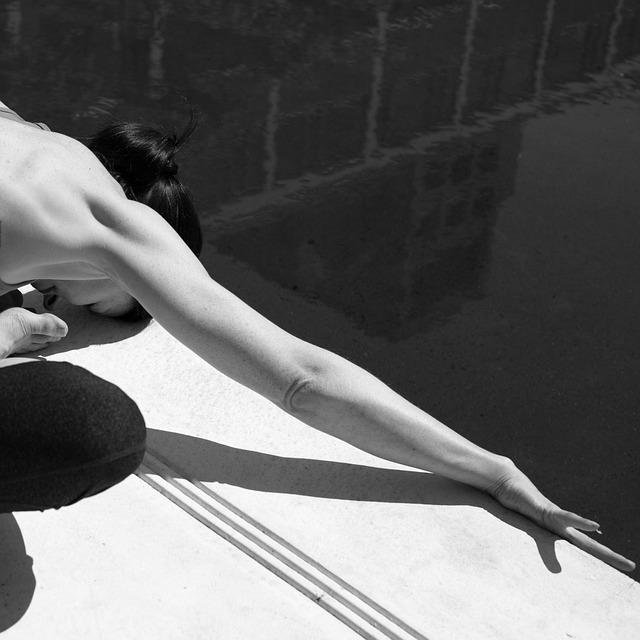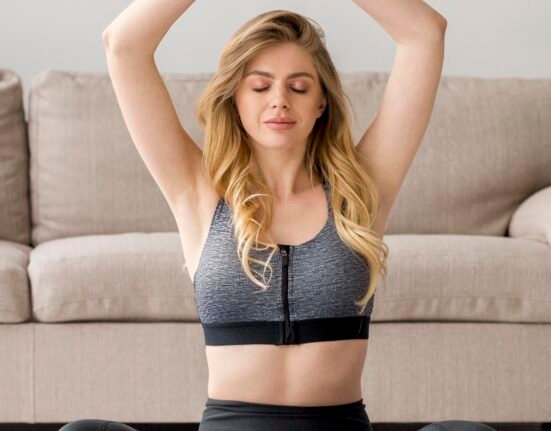In the whirlwind of modern life, stress has become an almost constant companion, quietly weaving itself into our daily routines. Yet, amid the chaos, a simple and timeless practice offers a refuge: mindfulness. Far more than just a buzzword, mindfulness techniques invite us to pause, breathe, and truly experience the present moment. This article delves into the art of mindfulness, exploring practical methods that can help dissolve tension, calm the mind, and restore a sense of balance in an often overwhelming world. Whether you’re a seasoned practitioner or a curious newcomer, discovering these mindful strategies may be the key to unlocking a quieter, more centered life.
Table of Contents
- Introduction to Mindfulness and Its Role in Stress Management
- Exploring Breathing Techniques to Calm the Nervous System
- Body Scan Meditation for Enhanced Relaxation and Awareness
- Incorporating Mindful Movement into Daily Routines
- Guided Visualization Practices to Reduce Anxiety
- Building a Sustainable Mindfulness Habit for Long-Term Wellbeing
- Q&A
- In Retrospect

Introduction to Mindfulness and Its Role in Stress Management
In the hustle and bustle of modern life, finding a moment of calm can feel like an elusive dream. Mindfulness offers a refuge—a simple yet powerful practice that encourages us to anchor ourselves in the present moment. By tuning into our breath, sensations, and thoughts without judgment, we create a mental space that fosters clarity and emotional resilience. This increased awareness helps to interrupt the cycle of stress, allowing us to respond to challenges with greater calmness and insight rather than reactivity.
Incorporating mindfulness into daily routines can quietly transform how we manage stress. Simple techniques such as focused breathing, body scans, and mindful observation can be practiced anywhere, anytime. These practices not only reduce immediate feelings of anxiety but also build a robust internal toolkit for long-term well-being. Consider these benefits:
- Enhanced emotional regulation by recognizing stress triggers early.
- Improved focus and concentration through deliberate attention control.
- Reduction in physical symptoms related to stress, like tension and headaches.
| Mindfulness Practice | Duration | Stress Relief Benefit |
|---|---|---|
| Breathing Awareness | 5 minutes | Immediate calming effect |
| Body Scan | 10 minutes | Relieves muscle tension |
| Mindful Observation | 3-5 minutes | Enhances present-moment awareness |

Exploring Breathing Techniques to Calm the Nervous System
When tension mounts, the breath can become a powerful anchor, guiding you back to a state of balance. Simple breathing techniques like
- Alternate nostril breathing: Balances brain hemispheres and soothes anxiety.
- 4-7-8 breathing: Slows the heart rate and eases the mind.
- Resonant breathing: Induces deep relaxation through slow, even breaths.
| Technique | Breath Pattern | Effect |
|---|---|---|
| Box Breathing | Inhale 4s, Hold 4s, Exhale 4s, Hold 4s | Promotes calm & focus |
| 4-7-8 Breathing | Inhale 4s, Hold 7s, Exhale 8s | Reduces anxiety & aids sleep |
| Alternate Nostril | Close right nostril, inhale left, switch | Balances energy & restores calm |

Body Scan Meditation for Enhanced Relaxation and Awareness
Delving into the subtle sensations throughout your body can transform a chaotic mind into a sanctuary of calm. This practice invites you to methodically guide your attention from the tips of your toes to the crown of your head, observing every twitch, tension, or ease without judgment. By anchoring your awareness in the present moment through bodily sensations, you cultivate a deeper connection to yourself, enabling significant stress relief and enhanced emotional clarity.
To maximize the benefits, consider the following approach:
- Find a quiet space: Ensure minimal distractions to maintain focus.
- Set a gentle pace: Move slowly and deliberately through each body part.
- Embrace sensations: Notice warmth, coolness, pressure, or lightness without resistance.
- Breathe consciously: Sync your breath with your attention to deepen relaxation.
| Body Region | Key Sensations to Notice | Intent |
|---|---|---|
| Feet & Toes | Grounding, warmth | Establish connection with earth |
| Hands & Fingers | Lightness, tension release | Enhance presence in action |
| Chest & Heart | Expansion, calm rhythm | Open emotional awareness |
| Head & Face | Relaxation, softness | Release mental clutter |

Incorporating Mindful Movement into Daily Routines
Integrating gentle, intentional movement into your daily activities can transform mundane moments into opportunities for mindfulness. Whether it’s stretching while waiting for your morning coffee or taking mindful steps during a short walk, these small actions anchor you in the present. Focusing on the sensations of each movement—how your muscles contract and relax, or the rhythm of your breath—helps alleviate tension and nurtures a calm mind. Consider incorporating simple practices like slow neck rolls, wrist circles, or even grounding yourself by feeling your feet connect with the floor, fostering a subtle but powerful connection between body and mind.
To make mindful movement a natural part of your routine, try creating pockets of intentional activity throughout the day. Here are some easy ways to get started:
- Morning stretches: Begin your day by awakening your body with slow, conscious movements.
- Walking meditation: Pay attention to each step and the rhythm of your breath.
- Desk breaks: Incorporate simple stretches like shoulder rolls or seated twists.
- Evening wind-down: Use gentle yoga or deep breathing movements to signal relaxation.
| Mindful Movement | Duration | Benefits |
|---|---|---|
| Neck rolls | 1-2 minutes | Relieves tension, boosts circulation |
| Walking meditation | 5-10 minutes | Enhances focus, calms the mind |
| Seated twists | 2-3 minutes | Stretches spine, improves posture |
| Breath with movement | 3-5 minutes | Balances nervous system, reduces stress |

Guided Visualization Practices to Reduce Anxiety
Immersing yourself in a mental landscape where peace reigns can work wonders for unwinding tension. Start by envisioning a serene place—a quiet beach, a gentle forest, or a sunlit mountain. As you mentally walk through this scene, engage all your senses: feel the warm sun on your skin, hear the soft rustle of leaves, or smell the fresh ocean breeze. This vivid sensory experience anchors your mind in the present, dissolving the spirals of anxious thoughts. Consistency in this practice deepens the calming effect, allowing your nervous system to reset and cultivate resilience against stress.
To maximize the benefits, pair your visualization with gentle breathing techniques. For instance, inhale deeply as you imagine drawing in calm energy from your surroundings, then exhale slowly, releasing tension with each breath. Incorporate these steps:
- Find a comfortable, quiet spot to sit or lie down.
- Close your eyes and take three deep breaths.
- Create a detailed mental image of a relaxing environment.
- Engage all your senses to enhance vividness.
- Synchronize your breath with the flow of your visualization.
| Visualization Element | Description | Effect |
|---|---|---|
| Scenery | Choose a peaceful place, real or imagined | Induces relaxation |
| Sensory Details | Include sounds, smells, and textures | Enhances immersion |
| Breathing | Deep, steady breaths paired with imagery | Reduces physiological stress |

Building a Sustainable Mindfulness Habit for Long-Term Wellbeing
Establishing a consistent mindfulness practice hinges on integrating moments of calm into your daily routine. Start small, allowing yourself to become fully present during simple activities like breathing, walking, or sipping tea. This gradual approach builds a resilient foundation, making mindfulness a natural part of your day rather than a forced chore. Embrace flexibility by experimenting with different techniques—such as guided meditation, body scans, or mindful journaling—to discover what resonates most with your unique rhythm and lifestyle.
To support your journey, consider tracking your mindfulness activities with a simple habit tracker. Below is an example layout that you can personalize to foster accountability and celebrate progress:
| Week | Daily Practice | Minutes Meditated | Key Insight |
|---|---|---|---|
| 1 | Focused breathing | 5 | Noticing racing thoughts |
| 2 | Body scan | 10 | Heightened body awareness |
| 3 | Walking meditation | 7 | Connection with surroundings |
| 4 | Mindful journaling | 8 | Clarity in emotions |
Tips for sustainability:
- Set realistic goals and celebrate small wins to stay motivated.
- Pair mindfulness with existing habits—like morning coffee or evening wind-down—to create seamless integration.
- Use reminders and tranquil prompts in your environment to gently nudge your awareness back to the present moment.
Q&A
Q&A: Mindfulness Techniques for Stress Relief
Q1: What exactly is mindfulness, and how does it help with stress?
A: Mindfulness is the practice of intentionally bringing your attention to the present moment—without judgment. When stress creeps in, it often latches onto worries about the past or fears about the future. Mindfulness gently tugs your focus back to what’s happening right now, creating space between you and your stress. This clarity can reduce anxiety and promote a calmer state of mind.
Q2: Can mindfulness be practiced anywhere, or does it require a special setting?
A: One of mindfulness’s greatest strengths is its flexibility. You don’t need a meditation cushion or a quiet temple—mindfulness can be woven into everyday moments. Whether you’re washing dishes, walking in the park, or waiting in line, tuning into your sensory experience and breath invites calm, whichever setting you find yourself in.
Q3: What are some easy mindfulness techniques to get started with?
A: A few simple techniques include:
- The five senses exercise: Notice five things you can see, four you can touch, three you can hear, two you can smell, and one you can taste.
- Focused breathing: Pay close attention to your breath as it flows in and out—no need to change it, just observe.
- Body scan: Slowly move your awareness through your body, noticing sensations without trying to fix anything.
Q4: How much time should I dedicate to mindfulness each day?
A: There’s no “perfect” amount. Even a few minutes can make a difference. Starting with 5 to 10 minutes daily sets a foundation, and over time you can explore longer sessions if you’d like. The key is consistency—not duration—so that mindfulness becomes a soothing habit rather than a task.
Q5: What common challenges do people face when practicing mindfulness?
A: Many beginners struggle with a wandering mind or feel impatient, expecting immediate results. Mindfulness isn’t about emptying your mind but noticing distractions without frustration. Remember, it’s natural for thoughts and feelings to arise; the practice lies in gently returning focus whenever your mind drifts off.
Q6: Can mindfulness help with chronic stress or anxiety, or is it only a short-term fix?
A: Mindfulness can be a powerful tool for both acute and long-term stress management. With practice, it can build resilience, helping you respond to chronic stress and anxiety with greater clarity and calm. However, it’s most effective when used alongside other wellness strategies and, if needed, professional guidance.
Q7: How does mindfulness differ from meditation?
A: Meditation is a formal practice that often involves sitting quietly and focusing attention; mindfulness is the broader quality of awareness that meditation cultivates. You can meditate to develop mindfulness, but you can also be mindful throughout your day without a dedicated meditation session.
Q8: Are there any scientific benefits of mindfulness for stress relief?
A: Absolutely. Research shows that mindfulness can lower cortisol levels (the stress hormone), reduce symptoms of anxiety and depression, improve sleep, and enhance overall emotional regulation. These benefits collectively support a healthier, more balanced response to stress.
Q9: How can someone stay motivated to keep practicing mindfulness?
A: Setting realistic goals, celebrating small wins, and remembering the benefits can keep motivation alive. Integrating mindfulness with activities you enjoy—like walking, art, or listening to music—can also make the practice feel effortless rather than like an obligation.
Q10: Where can readers find resources to learn more about mindfulness techniques?
A: There’s a wealth of books, apps, podcasts, and online courses available. Some popular options include the app Headspace, the book Wherever You Go, There You Are by Jon Kabat-Zinn, and guided mindfulness practices available on YouTube. Exploring different sources can help you find an approach that resonates best with you.
In Retrospect
As the gentle waves of mindfulness ripple through the currents of our busy lives, they offer a quiet harbor from the storms of stress. Embracing these simple yet profound techniques invites us to pause, breathe, and reconnect with the present moment—transforming tension into tranquility. While the journey toward calm is uniquely personal, cultivating mindfulness can be a steadfast companion, guiding us toward balance amidst the chaos. In the end, it’s not about escaping stress, but learning to meet it with open awareness and steady grace.















Leave feedback about this